Osprey Banding: Explained
By Teresa Ely
My name is Teresa and I am the Banding Manager at Golden Gate Raptor Observatory (GGRO), a program of the Golden Gate National Parks Conservancy. I started working with raptors 25 years ago by presenting raptors for public outreach programs, and I began banding raptors in 2008 as an intern for Golden Gate Raptor Observatory. I continued to band and count migrating raptors at different migrations stations throughout the west and in Veracruz, Mexico. In 2016, I received my Master’s degree studying America Kestrel body size change as it relates to population decline, and then returned to GGRO as the Banding Manager. I have been involved with banding the osprey nestlings at SF Bay Osprey’s Whirley Crane site since banding began in 2017. I know there have been a few questions out there about banding, and thought I would share a little bit about the why we band raptors and the banding process.
Each year, millions of birds are banded throughout North America and the world. The information from banding birds is used to monitor the status and trends of resident and migratory bird populations. To band birds, you must have the appropriate state and federal permits, and years of banding and handling experience.
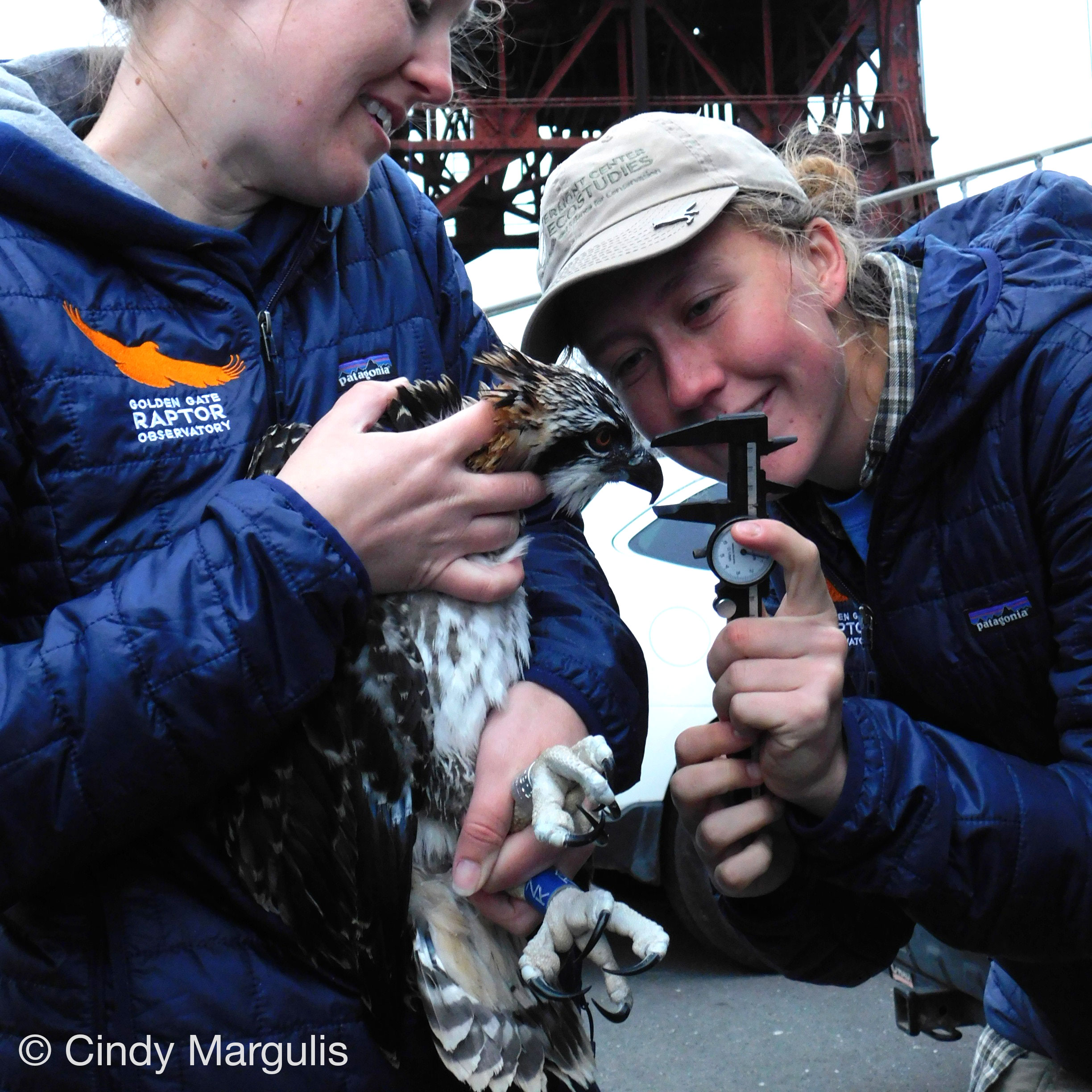 Teresa holding ZK while GGRO intern Kirsti Carr takes a culmen (beak) measurement. Teresa is gently holding the bird’s head steady to take a quick and accurate measurement. Other measurements like tail, hallux claw (the largest talon), and wing length are also taken.
Teresa holding ZK while GGRO intern Kirsti Carr takes a culmen (beak) measurement. Teresa is gently holding the bird’s head steady to take a quick and accurate measurement. Other measurements like tail, hallux claw (the largest talon), and wing length are also taken.
You might be wondering – why do we use both a color band and a metal band on the osprey nestlings? Why not just a color band?
Color bands, also known as auxiliary markers, are usually made from plastic or metal and placed on the leg opposite to the one that receives a metal band. Researchers must coordinate with California Department of Fish and Wildlife, as well as other raptor researchers in California to determine a researcher specific color and alphanumeric code. The goal is to avoid duplicating work by colleagues and to reduce the disturbance to the raptor. However, sometimes some colors for the bands are used in two different regions in the United States, and that is why it is important to get the banding code on the color band.
 Trained raptor biologists who are permitted, will enter the nest and retrieve the nestlings. It is unsafe to band the nestlings at the nest on the crane, so a system of ropes and people are used to lower the osprey safely to the ground.…
Trained raptor biologists who are permitted, will enter the nest and retrieve the nestlings. It is unsafe to band the nestlings at the nest on the crane, so a system of ropes and people are used to lower the osprey safely to the ground.… 
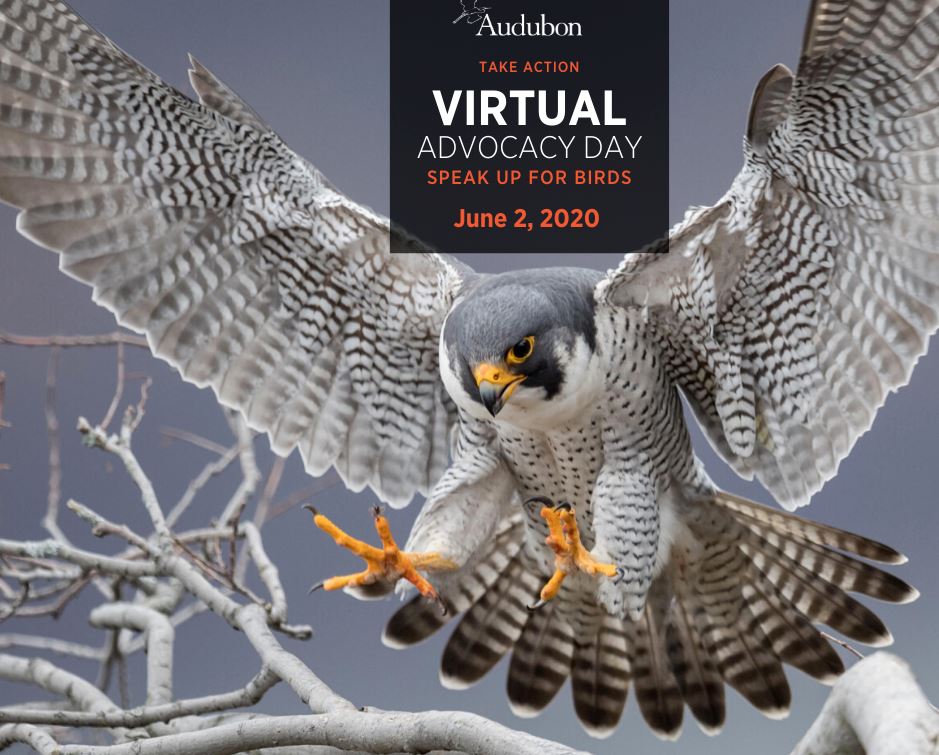 Advocacy Day went online this year! Advocacy Day 2020 bird photo by Harry Collins.
Advocacy Day went online this year! Advocacy Day 2020 bird photo by Harry Collins.
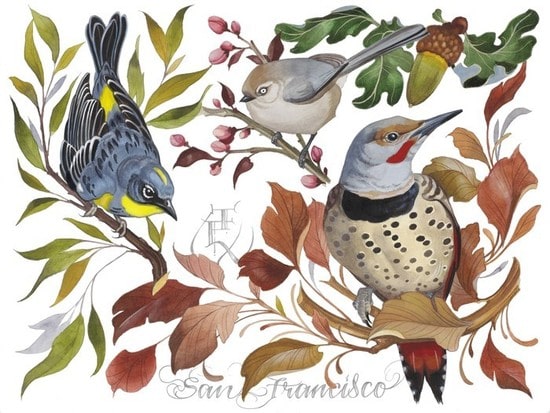
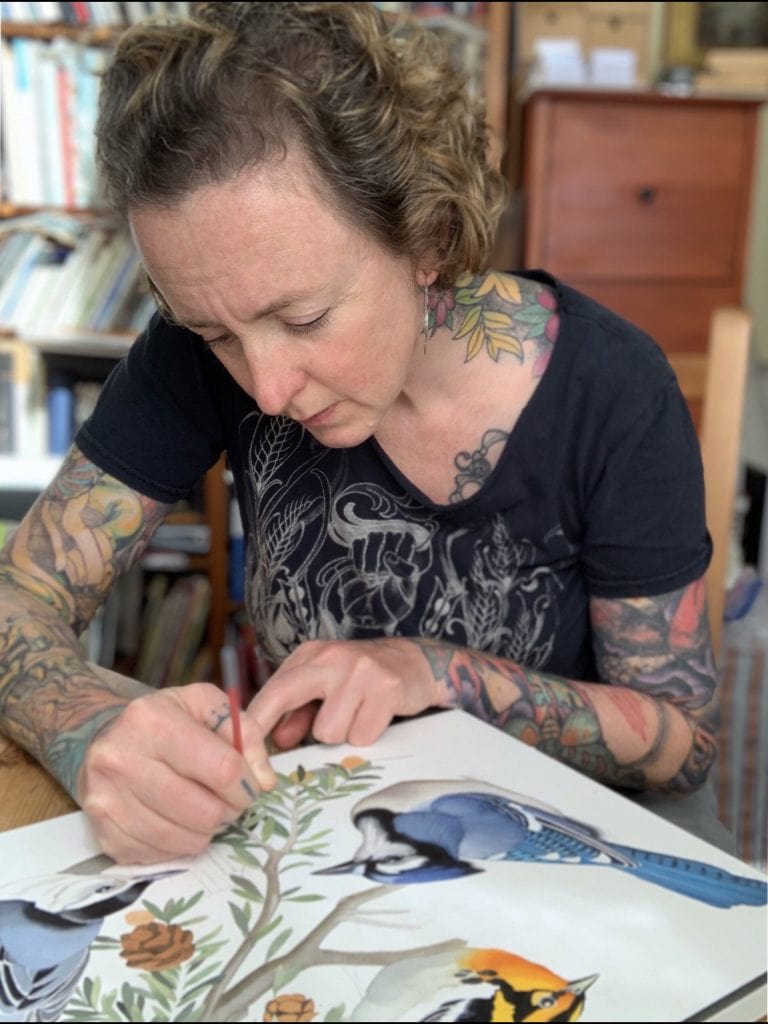 Tex Buss at work
Tex Buss at work
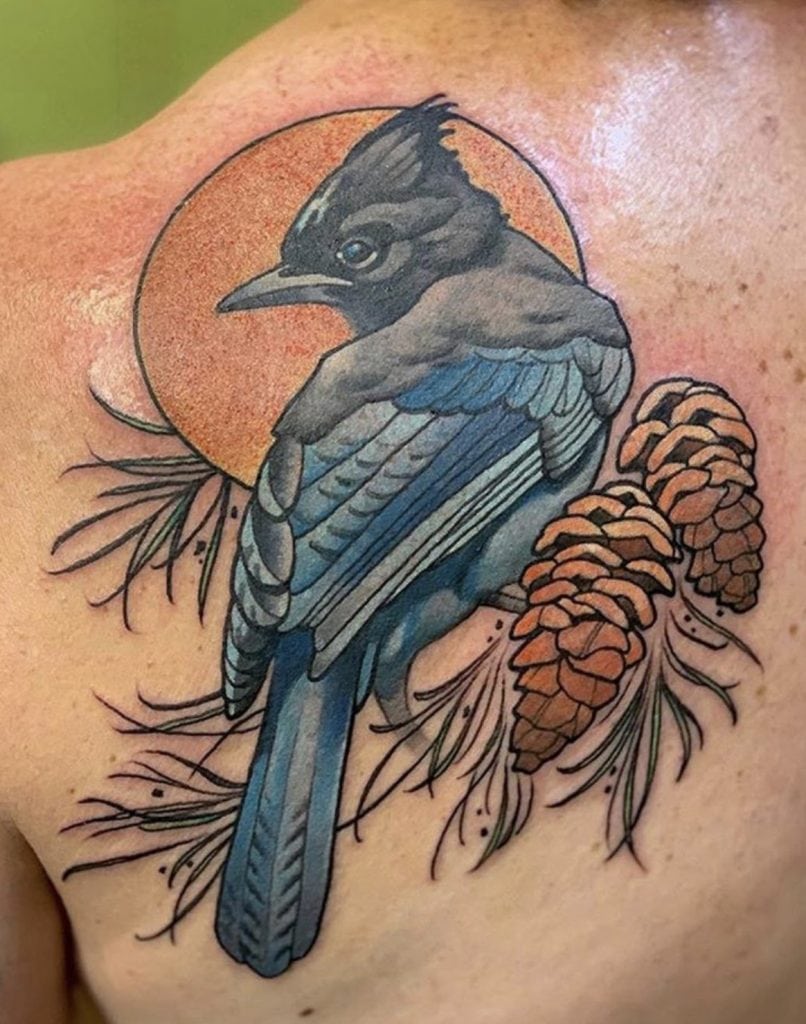 Tattoo by Tex Buss of a Steller’s Jay
Tattoo by Tex Buss of a Steller’s Jay
 Some of Tex Buss’s birds are imaginary creations, like this one.
Some of Tex Buss’s birds are imaginary creations, like this one.
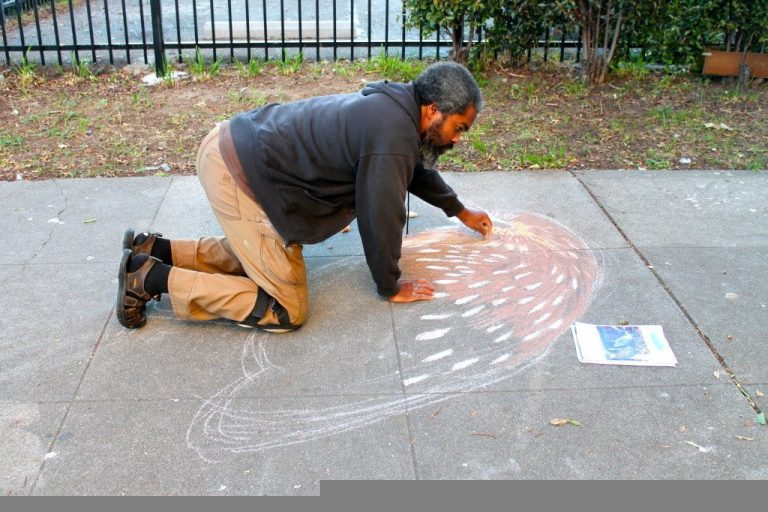
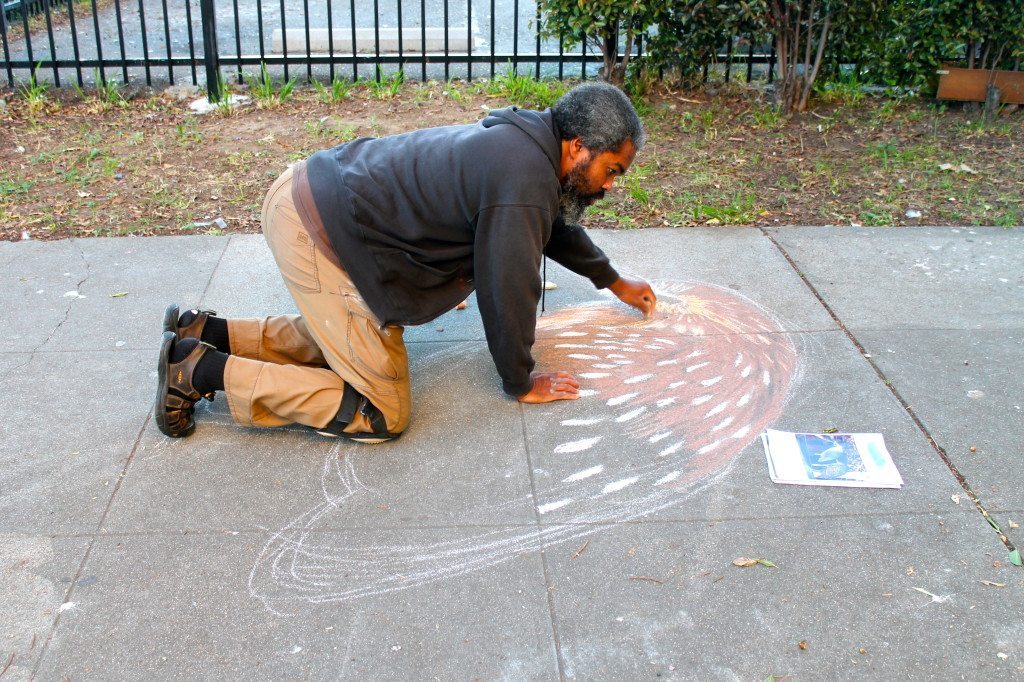 Clay Anderson works on a chalk-art drawing of a Black-crowned Night-Heron, part of a Golden Gate Bird Alliance campaign to protect Oakland’s herons. By Ilana DeBare
Clay Anderson works on a chalk-art drawing of a Black-crowned Night-Heron, part of a Golden Gate Bird Alliance campaign to protect Oakland’s herons. By Ilana DeBare